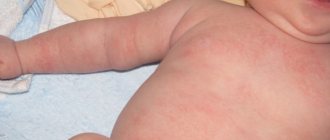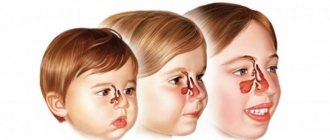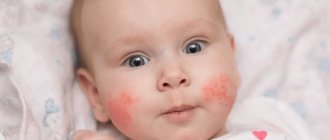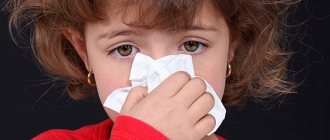Causes of the disease
According to statistics, about 20% of the population suffers from allergies to wool. It is most often caused by dog and cat hair. But also other animals, such as rodents, can cause this disease. Allergic reactions can also be caused by woolen products, for example, a camel blanket or sheep skin on the floor. What is the reason? For a long time it was believed that this problem was directly related to animal hairs. But in the course of numerous studies it turned out that this is an erroneous assumption. Most often, allergies occur due to substances that are found in other substances released from the body of pets. Typically, this substance is a protein contained in feces and secretions (feces, urine, sweat and sebaceous secretions, as well as pieces of epidermis). Wool absorbs these allergens very well, which is why this allergy is called “epidermal” and a person deals with it.
Which animals do not cause allergies?
Hypoallergenic pets, in order of increasing likelihood of a reaction:
- Aquarium fish - it is worth noting that allergies can be caused by fish food;
- Reptiles - these animals include turtles, various types of lizards, for example, an iguana or a chameleon;
- Rodents - chinchilla, Syrian hamster, hairless Baldwin guinea pig;
- Selected breeds of cats and dogs.
Hypoallergenic cat breeds:
- Balinese;
- Oriental (eastern) shorthair;
- Javanese (Javanese);
- Devon Rex;
- Cornish Rex;
- Sphinx.
Hypoallergenic dog breeds:
- Schnauzers;
- Maltese;
- Bichons;
- Samoyeds;
- Shih Tzu;
- Chinese Crested;
- Papillons;
- Dwarf Spitz.
It is important to remember that if you get a hypoallergenic cat or dog, there is still a risk of developing an allergic reaction to animals.
The above breeds are characterized by the fact that a minimum number of allergy sufferers react to them, however, keeping and caring for the animal must still obey certain rules.
Symptoms
So what are the symptoms of an allergy to animal fur?
Symptoms for various coats have manifestations of local and general localization. Common symptoms include:
- swelling of the face and limbs;
- difficulty breathing;
- the appearance of a rash, itchy skin (these manifestations occur almost immediately after interacting with an animal);
- cough (dry), nasal discharge;
- increased body temperature (usually low-grade fever).
Local symptoms are:
- folds appear near the lower eyelids;
- the chest, due to breathing problems, takes on the shape of a barrel;
- dark circles appear under the eyes;
- A fold (transverse) appears near the tip of the nose.
Allergic reactions do not always appear immediately upon first contact with animals. Quite a long time often passes from the moment you have a pet at home. During this period, the body becomes sensitive to allergens - proteins.
Dog hair - signs of allergies
Allergies to dog fur are extremely rare, with the exception of some breeds of these animals. Surprisingly, short-haired dogs are the most likely to cause allergies. This is due to the fact that the main allergens are located on the skin of dogs, and not on their fur.
Sometimes allergies can be caused by small insects - mites, which live on the skin of an animal and can settle on the bed or in the upholstery of sofas and armchairs. Unfortunately, these insects are very difficult to get rid of and the only thing that can save the situation is heat treatment of infected surfaces - drying, ironing. An allergy to animal fur can also occur after dog saliva comes into contact with a person’s skin.
Allergies to dog fur
In general, dogs are less likely to cause allergies than cats. It is possible that this is due to them paying less attention to their own hygiene and their fur is not so saturated with saliva. But dogs are walked outside every day, and more than once. Therefore, they bring a variety of dirt, from dust and bacteria to feces. All this can easily provoke a severe allergic reaction. Dogs and cats that have a hard, low-shedding coat are less likely to cause allergies. It also depends on the size of your pet: if it is a small breed, then you are less likely to suffer from an allergen.
Prevention
To prevent a newborn from developing an allergy to animals, it is necessary to take preventive measures. It is advisable not to get a pet until the child’s immune system is stronger (by three to five years). It is necessary to exclude contact with a potential allergen: ensure that the infant does not come into contact with animals on the street or at a party. Naturally, it is necessary to strengthen the newborn’s immunity, which will allow the body not to react so sharply when encountering antigens. To strengthen the immune system, you need to continue breastfeeding until the period recommended by pediatricians, spend a lot of time with your baby in the fresh air, etc.
Particular attention should be paid to the prevention of allergies in infants if there is already an animal in the house. To prevent a newborn from having allergic reactions to it, you need to:
- monitor your pet’s hygiene; do not allow your pet to sleep in the bed;
- do not allow your pet to come into contact with children's clothing and toys;
- regularly do wet cleaning and ventilate the room;
- Always wash your hands after touching an animal and before touching a child.
Allergy to cat fur
Cats are considered very clean animals. How does an allergy to cat fur manifest itself? We often observe how during the day this animal, at every opportunity, begins hygienic procedures - licking its fur. The animal, at first glance, remains clean. This is achieved with the help of certain enzymes contained in saliva, and the wool is saturated with them. These substances are very strong allergens to which humans react. Other allergens come from tiny droplets and pieces of urine and feces that inevitably remain on the cat's fur after visiting its litter box.
Due to all of the above, the cat is considered the most allergenic among pets. This especially applies to cats with long and fluffy hair that constantly shed. Also, according to statistics, male cats are more dangerous in terms of allergic reactions. A lot depends on the breed, but since it has been found that wool is not the main culprit of allergies, hairless animals can easily cause unpleasant allergic reactions.
Manifestation of allergies to cats in newborns
An adult or a teenager, a man, a woman, or even a baby can all suffer from a cat allergy. There is no age limit for this disease; it affects everyone equally. If both parents suffer from this, then there is a 98% chance that the baby will also be susceptible to this allergy. The fact is that the immune system of people who suffer from this type of allergy falsely interprets the protein contained in the fur and skin of pets. If it enters the body, the body’s defenses try to fight it, producing antibodies. It is these antibodies that cause a number of unpleasant symptoms that bring discomfort. And such a false interpretation can be transmitted genetically.
© shutterstock
Symptoms in newborns that are observed with allergies to cats:
- runny nose;
- redness of the mucous membrane of the eye;
- constant lacrimation;
- cough, sneezing;
- skin rashes, blisters, hives, acne.
Dangerous symptoms that appear in infants with allergies to cats:
- severe wheezing when breathing;
- labored breathing;
- manifestation, attacks of bronchial asthma;
- decreased blood pressure;
- swelling around the mouth, nose (possibly blue) and neck.
These symptoms are often confused with a cold, a viral infection. This is not strange, because they are very similar. But, cold symptoms disappear after 7-10 days, and allergic symptoms will appear as long as the baby is in close contact with the animal. Parents should be wary of the prolonged presence of symptoms. If you have any doubts, you should contact a pediatrician or an allergist; they will conduct the necessary tests, determine the presence of allergies and make the correct diagnosis.
It is important to treat newborn children with special care. Allergies can occur even if one of the guests brought home particles of cat fur on their clothes. In this case, it is enough just to take a blood test from the baby.
This disease is not as simple as it seems. It poses a danger to the baby's health. Simple sneezing and nasal congestion, which are a direct sign of allergies in newborns, can develop into bronchial asthma. The younger the baby is, the more pronounced the symptoms are. For example, a baby may experience choking, while an adult may experience a simple cough.
You need to remember that allergies may not arise instantly as soon as you get a pet. It may appear or appear after some time: several weeks, months.
© shutterstock
Allergic reactions to sheep's wool
This allergy occurs when a person is in close contact with products made from sheep's wool or when it contains natural sheep's wool. If such a pattern appears, it means you have an identified allergen, contact with which should be avoided. If this is not done, then itching, cough and runny nose can develop over time into a more serious disease - asthma (bronchial).
Camel hair and allergies
Allergy symptoms usually begin to appear only after a person comes into contact with a camel. The disease occurs especially often in those people who have been using products made from camel wool for some time: blankets, carpets, clothes. The disease manifests itself in the form of a dry cough, sneezing and itching in the nasopharynx.
To combat allergies, you need to get rid of the things that cause them, otherwise serious complications can arise.
Sheep wool is the cause of an allergic reaction. An allergy to wool can also occur when a person comes into contact with sheep hair. As a rule, this is possible if a person uses something made from natural sheep wool. The disease is especially dangerous for a small child. The main symptoms of allergies are:
- dry cough;
- itching in the nose;
- dyspnea.
In some cases, a runny nose may appear. It is recommended to remove from the premises all items made from the fur of this animal and, in more complex forms of the disease, undergo a course of drug treatment, otherwise the allergy may develop into bronchial asthma.
Allergies to camel hair
Allergy to camel hair is quite common. Not everyone can get to camels to understand whether there will be a side effect after communication, but many people have some products made from camel wool at home. Camel blankets, bedspreads, vests, etc. - all this is quite popular among the population. But despite their warmth and beauty, they can cause unwanted allergic reactions. The allergy manifests itself after wearing clothes: various skin redness and irritation appear, and difficulty breathing may also occur. If all this happened, then it becomes clear that you cannot do without visiting a doctor - there is an allergy.
Causes of allergies:
- protein, which is found in large quantities in the camel’s body, is the main allergen, and quite powerful;
- wool, the microstructure of which irritates when it comes into contact with human mucous membranes and skin.
If you are allergic to camel hair, you may experience:
- Unpleasant sensation in the throat.
- Respiratory dysfunction.
- Atopic dermatitis.
- Allergic dry cough.
- Difficulty nasal breathing.
- Various rashes and itching on the skin.
What could be an allergen?
Allergies are especially common in children, who never miss an opportunity to play or pet an animal.
The most common allergy is to representatives of the cat family. Dogs are the second most important, but they are half as likely to cause allergies as cats. Budgerigars and Djungarian hamsters also cause allergies.
But what exactly can cause an allergic reaction:
- Pet saliva - salivary fluid contains specific proteins that are more active, unlike human saliva. This is due to the diet of animals: raw meat, contaminated food. Therefore, in animals, saliva is more aggressive and concentrated in composition, which increases its ability to cause allergic reactions;
- Animal skin scales - like humans, their epidermis is constantly renewed, and exfoliated dead cells settle on the furniture, carpet, skin and mucous membranes of the owner. At the same time, the protein in the skin of an animal is significantly different from that of a person, which causes the immune system to attack foreign particles, provoking the development of an allergic reaction;
- Animal urine is more acidic than human urine. Thus, the animal’s urine is able to penetrate into the deeper layers of the skin and mucous membranes. In such cases, irritation of the skin is caused by uric acid. The risk of developing allergies increases because drops of urine can spread through the fur while washing the animal;
- Feces are one of the causes of animal allergies. Excrement can also be carried by the animal in space, getting on the mucous membranes and skin of family members living with the pet.
- An animal can bring allergens on its fur from the street: dust;
- pollen of flowering plants;
- mold;
- fluff;
- wool;
- biological fluids of other animals;











